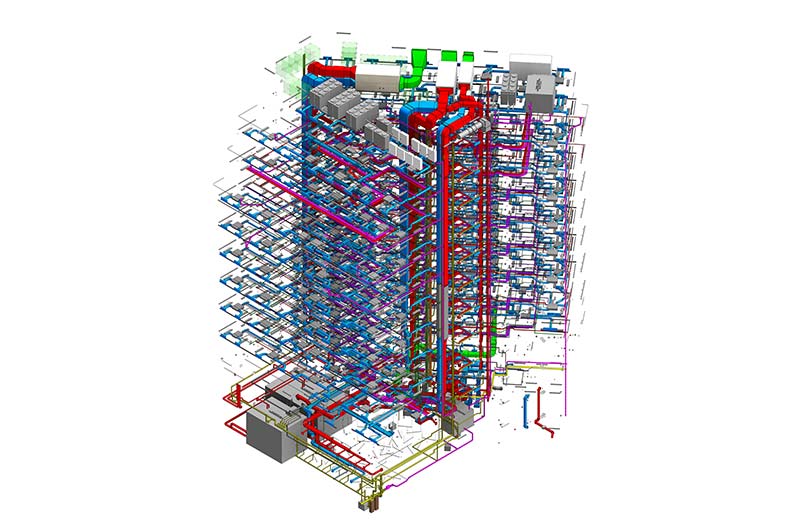Role of BIM in MEP Coordination Process

The optimal use of construction knowledge and experience in the fields of planning, design, and operation so that the overall project objectives can be met is defined as “constructability”. In simple terms, it is the prerequisite to begin on a construction project and MEP (Mechanical, Electrical, Plumbing) coordination is one of the most challenging tasks faced by the engineers and professionals as they can account for up to 40 to 60% of the project
Traditionally, MEP coordination was carried out manually by overlaying the plans sequentially and comparing them. This is a very tedious, time-consuming process and inefficient apart from being costly. With the advent of Building Information Modeling (BIM), the efforts required in the coordination process were substantially eased with a saving in time and cost.
The advantages of using 3D BIM for MEP coordination services are:
#1 Efficient Clash Detection and Resolution
A 3D model for Architecture, Structure, and MEP is created based on the designs developed by the designers. This model is then exported to a software called Navisworks where it is checked for the clashes and a clash report is generated. These clashes are resolved by making the necessary design changes in the BIM model. Since the clashes are easily visible in the model, it is easier to resolve them by re-routing the services or carrying out the design changes as deemed necessary.
#2 Cost Saving
BIM follows the principle of “Build Twice”: the first in the form of a model complete with all the information and the second time on the site. This aids in resolution of any conflicts before the onset of actual construction. These changes are easier and less expensive when compared to the changes that need to be carried on site. This, in turn, reduces wastage in terms of material and manpower, thereby resulting in cost savings.
#3 Prevention of delays
BIM coordination is carried out in the planning phase of the construction. Any errors in design are brought to light at this stage. The elimination of errors in the planning stage provides a room for smooth execution on-site ruling out chances of delays arising due to faulty design.
#4 Reducing rework on-site
BIM database provides the information related to design and construction in the early design process. This data can be leveraged for the analysis and simulation of the model so that the resultant model is free of any conflicts. This reduced the probability of the necessity of rework required on the site.
Thus, BIM is a holistic approach to a building design. MEP coordination carried out through BIM results in efficient and cost-effective buildings